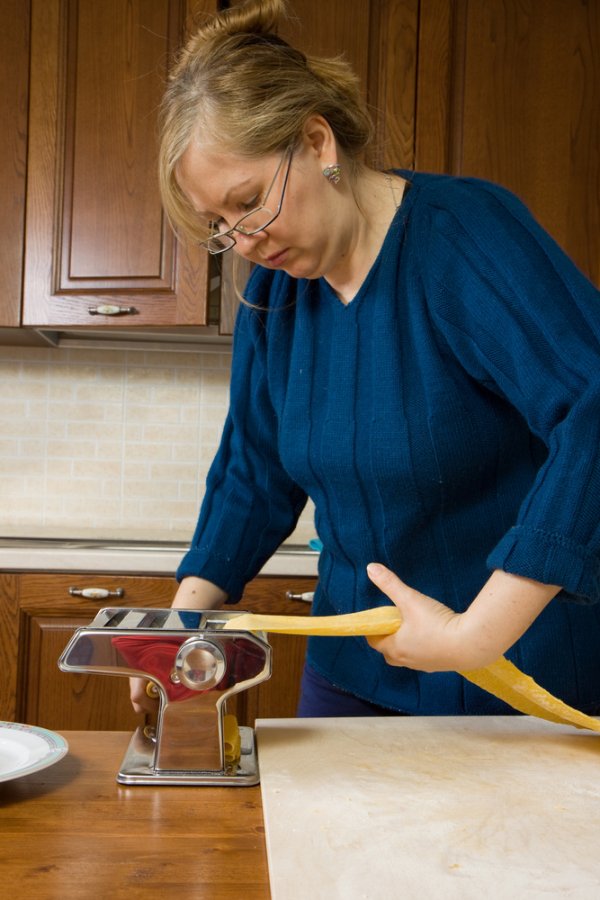Culture and Society: Women in Culture
General
Although the woman’s traditional image in Italy’s patriarchal society appears submissive and compliant, Italian women increasingly aspire toward independence and economic activity. With support from legislation, Italian women’s level of education parallels with men’s today. However, only about half of Italian women are in the formal work force, so economic participation remains limited.
Though Italian women have equal opportunities for education and employment, they often assume the stereotypical roles of wives and mothers. Many women seeking employment become discouraged by discrimination in the workplace, in terms of lower wages and fewer promotions. Working women also face extra challenges at home, as men’s contribution to household work in Italy remains minimal. Many Italian women have taken to self-employment for economic independence.
Although laws do not restrict women’s participation in government, fewer women than men hold elected office. Women hold about a third of the seats in Parliament. They also remain underrepresented in business administration and management, holding only about a quarter of jobs in those fields. Women fare a bit better as doctors and lawyers, and hold about half of professional and technical jobs.
Women in rural areas experience more subjection to male dominance, but because most of the Italian population lives in urban areas, serious issues tend to be isolated. Even in rural areas, increasing numbers of women act as farm managers rather than simply drudge workers, thus endorsing times of change.
Non-Italians comprise only 6 percent of the population, but women in ethnic minorities sometimes face additional challenges. However, all are equal before the Italian law.
Legal Rights
Women have equal rights in regard to property, inheritance, marriage, divorce, education, employment, health care, and driving, and received the right to vote in 1945. They have reproductive rights, the right to have an abortion, and to decide about the number and spacing of children. Authorities require parental authorization for abortions for women under 18.
Women can also initiate divorce, which was made legal only in 1970. They have equal rights with respect to the custody of children after divorce. Italian courts decide custody arrangements, maintenance, and property issues on a case-by-case basis.
Education
Italian women have the same access to educational opportunities as men. The literacy rate for both men and women is 98 percent. The ratio of women among first university degree holders has reached about two-thirds—the highest ratio in developed countries. Women have started to study technical subjects like mathematics, engineering, manufacturing, construction, and computer sciences at the same rate as men. In spite of that, women still prefer humanities over science or medicine, which limits them to certain sectors, jobs, and career levels. Increasing numbers of women study for PhDs. Coeducation prevails at all levels of schooling.
Italian women have begun to enter the workforce at the same rate as men, but even the top well-qualified women often encounter the glass ceiling in employment. In some sectors, a man who completes 10 years of work still proves twice as likely to be promoted as a woman with the same experience. This has resulted in significant differences in wages for men and women.
Dating, Marriage and Family
Arranged marriages, historically the norm in Italy, no longer set the precedent. Almost all Italians marry, but today, women possess the freedom to choose their own spouses. Women date, with norms for dating paralleling Western European averages. Still, many young Italians prefer to go out in groups. Young people meet in colleges, at social gatherings or at the workplace.
Married women need not take their husband’s name, though they may use it along with their own surname if they wish. If a woman does assume her husband’s name upon marriage, she must give it up after divorce.
Most women run their own homes. They usually freely make decisions about household matters and control the family budget. Married women can also own and manage assets independently. Studies show that the division of labor in Italian households is unequal, as men spend less than two hours a day on housework, the lowest figure among European nations.
Although Italian families have traditionally been large, no stigma accompanies a woman’s choice to have few or no children in Italy, today. The fertility rate for Italian women is relatively low at 1.4 births per woman, and the Italian government has begun to provide incentives to raise fertility rates. In cases of divorce, courts usually award parents joint custody of the children.
Polygamy, neither legal nor socially acceptable in Italy, occasionally surfaces in a few minority communities.
Health
The Italian government guarantees equal access to health care for all. Poor people receive free healthcare services. Life expectancy for women is 85 years, compared to 80 years for men. Women have access to reproductive healthcare services including ultrasound scanning and prenatal counseling. The proportion of cesarean-section deliveries, particularly in private clinics, remains high. The maternal mortality rate is four deaths per 100,000 live births.
Italian law allows abortion on all grounds up to 90 days into the pregnancy, after which it permits it only to save the mother’s life. Women seeking abortion need a physician’s certificate, must wait at least seven days, and must undergo counseling. An abortion must be performed only in an authorized medical facility or a public healthcare center. However, because health care providers can opt out of providing abortion services as “conscientious objectors,” many healthcare facilities, especially in Southern Italy, do not offer these services. Women sometimes wait 30 days to have an abortion performed at a public hospital, and the number of illegal abortions performed in Italy remains high.
Nearly three-quarters of adult Italian women use contraceptives, which they find readily available. No stigma accompanies use of contraceptives.
Statistical sources include:
Inter-Parliamentary Union, Women in National Parliaments
World Bank, Databank
US Central Intelligence Agency, World Factbook
Copyright © 1993—2024 World Trade Press. All rights reserved.

 Italy
Italy 






